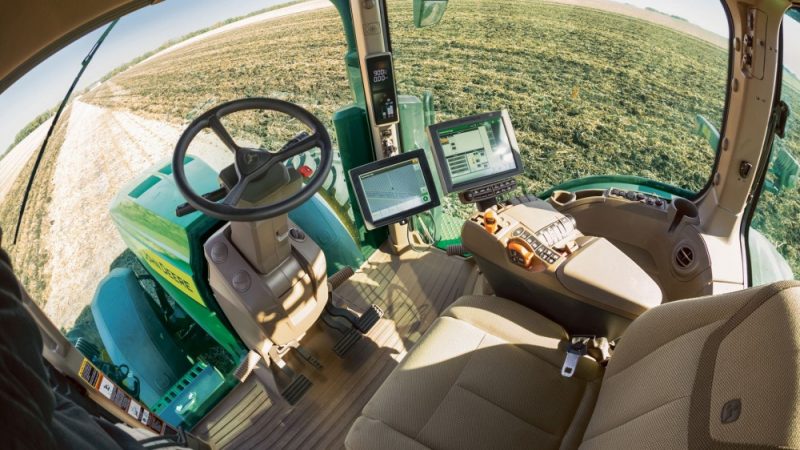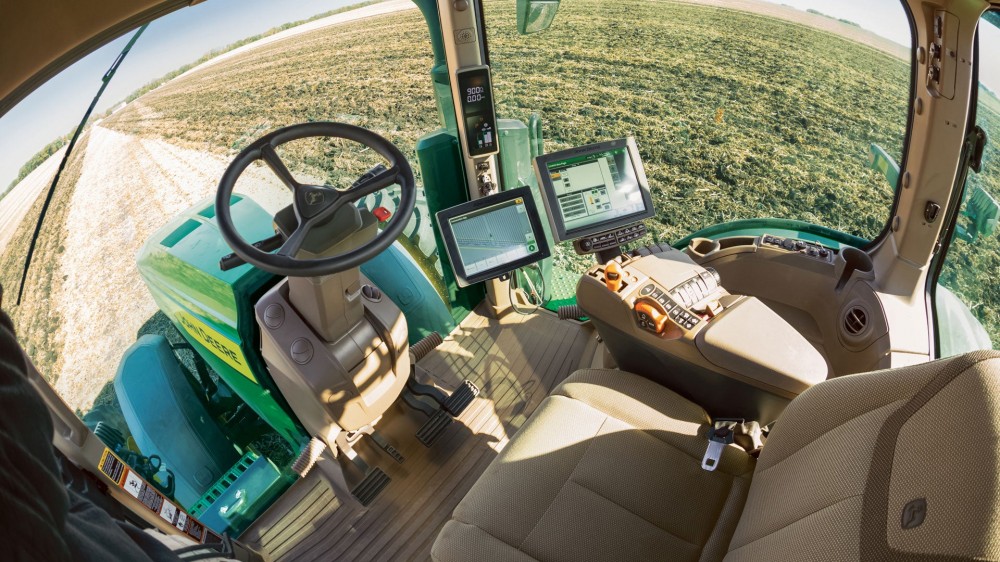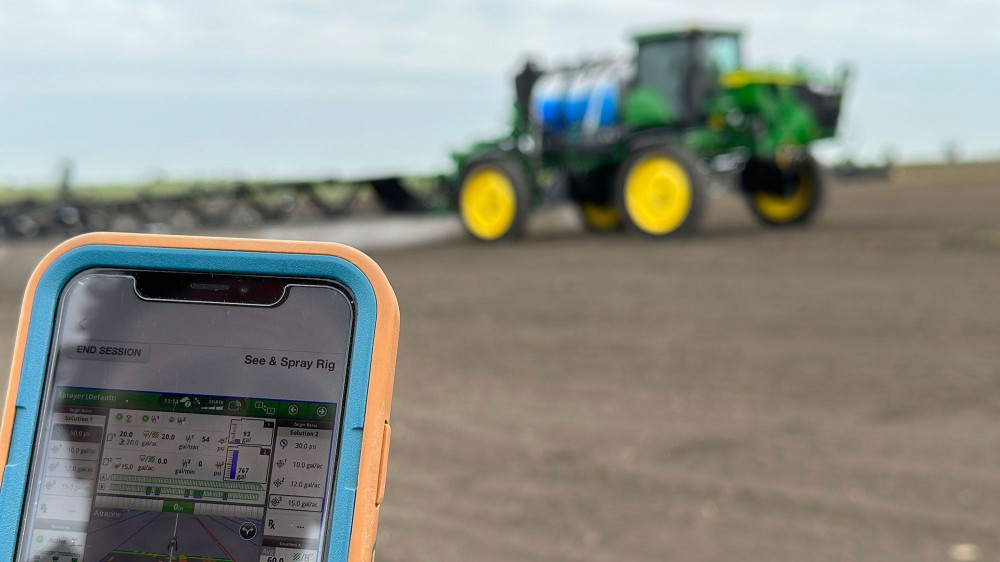How John Deere’s tech evolved from 19th-century plows to AI and autonomy

Buzzwords like autonomy, artificial intelligence, electrification, and carbon fiber are common in the automotive industry, and it’s no surprise that they are hot topics: Manufacturers are racing to gain an advantage over competitors while balancing cost and demand. What might surprise you, however, is just how much 180-year-old agriculture equipment giant John Deere uses these same technologies. The difference is that they’re using them on 15-ton farm vehicles.
A couple of years ago, John Deere’s chief technology officer Jahmy Hindman told The Verge that the company now employs more software engineers than mechanical engineers. You don’t have to dig much deeper to find that John Deere is plowing forward toward technology and autonomy in a way that may feel anachronistic to those outside the business.
“It’s easy to underestimate the amount of technology in the industries we serve, agriculture in particular,” Hindman told PopSci. “Modern farms are very different from the farms of 10 years ago, 20 years ago, and 30 years ago. There are farms that are readily adopting technology that makes agriculture more efficient, more sustainable, and more profitable for growers. And they’re using high-end technology: computer vision, machine learning, [Global Navigation Satellite System] guidance, automation, and autonomy.”
PopSci took an inside look at the company’s high-tech side at its inaugural 2023 John Deere Technology Summit last month. Here’s how it’s all unfolding.

Where it started—and where it’s going
John Deere, the OG founder behind the agricultural equipment giant, started as a blacksmith. When Deere, who was born in 1804, moved from his native Vermont to Illinois, he heard complaints from farmer clients about the commonly used cast-iron plows of the day. Sticky soil clung to the iron plows, resulting in a substantial loss in efficiency every time a farmer had to stop and scrape the equipment clean, which could be every few feet.
Deere was inspired to innovate, and grabbed a broken saw blade to create the first commercially successful, “self-scouring” steel plow in 1837. The shiny, polished surface of the steel worked beautifully to cut through the dirt much more quickly, with fewer interruptions, and Deere pivoted to a new business. Over 180 years later, the company continues to find new ways to improve the farming process.
It all starts with data, and the agriculture community harnesses and extrapolates a lot of it. Far beyond almanacs, notebooks, and intellectual property passed down from generation to generation, data used by the larger farms drives every decision a farm makes. And when it comes to profitability, every data point can mean the difference between earnings and loss. John Deere, along with competitors like Caterpillar and Mahindra, are in the business of helping farms collect and analyze data with software tied to its farm equipment.
With the uptake of technology, farming communities in the US—and around the world, for that matter—are finding ways to make their products more efficient. John Deere has promised to deliver 20 or more electric and hybrid-electric construction equipment models by 2026. On top of that, the company is working to improve upon the autonomous software it uses to drive its massive vehicles, with the goal of ensuring that every one of the 10 trillion corn and soybean seeds can be planted, cared for, and harvested autonomously by 2030.
Farming goes electric
In February, John Deere launched its first all-electric zero-turn lawn mower. (That means it can rotate in place without requiring a wide circle.) Far from the noisy, often difficult-to-start mowers of your youth, the Z370R Electric ZTrak won’t wake the neighbors at 7:00 a.m. The electric mower features a USB-C charging port and an integrated, sealed battery that allows for mowing even in wet and rainy conditions.
On a larger scale, John Deere is pursuing all-electric equipment and has set ambitious emissions reduction targets. As such, the company has vowed to reduce its greenhouse gas emissions by 50 percent by 2030 from a 2021 baseline. To grow its EV business more quickly, it will benefit from its early-2022 purchase of Kreisel Electric, an Austrian company specializing in immersion-cooled battery technology. Krieisel’s batteries are built with a modular design, which makes it ideal for different sizes of farm equipment. It also promises extended battery life, efficiency in cold and hot climates, and mechanical stability.
Even with a brand-new battery division, however, John Deere is not bullishly pushing into EV and autonomous territory. It still offers lower-tech options for farmers who aren’t ready to go down that path. After all, farm equipment can last for many years and tossing new technology into an uninterested or unwilling operation is not the best route to adoption. Instead, the company actively seeks out farmers willing to try out new products and software to see how it works in the real world. (To be clear, the farms pay for the use of the machines and John Deere offers support.)
“If it doesn’t deliver value to the farm, it’s not really useful to the farmer,” Hindman says.
See and Spray, launched last year, is a product that John Deere acquired from Blue River Technology. The software uses artificial intelligence and machine learning to recognize and distinguish crop plants from weeds. It’s programmed to “read” the field and only spray the unwanted plants, which saves farmers money by avoiding wasted product. See and Spray uses an auto-leveling carbon fiber boom and dual nozzles that can deliver two different chemicals in a single pass.

Another new technology, ExactShot, reduces the amount of starter fertilizer needed during planting by more than 60 percent, the company says. This product uses a combination of sensors and robotics to spritz each seed as it’s planted versus spraying the whole row; once again, that saves farmers an immense amount of money and supplies.
Right to Repair brings victory
Just one machine designed for farmland can cost hundreds of thousands of dollars. Historically, if equipment were to break down, farmers had to call in the issue and wait for a technician directly from John Deere or an authorized repair shop for a repair. Many farms are located far away from city centers, which means a quick fix isn’t in the cards. That could be frustrating for a farmer at any time, particularly in the middle of a hectic planting or harvest season.
At the beginning of this year, John Deere and the American Farm Bureau Federation signed a memorandum of understanding stating that farmers and independent repair shops can gain access to John Deere’s software, manuals, and other information needed to service their equipment. This issue has been a point of contention for farmers, and a new law in Colorado establishes the right to repair in that state, starting January 1 of next year.
However, that comes with a set of risks, according to John Deere. The company says its equipment “doesn’t fit in your pocket like a cell phone or come with a handful of components; our combines can weigh more than 15 tons and are manufactured with over 18,500 parts.”
In a statement to DTN, a representative from John Deere said, “[The company] supports a customer’s decision to repair their own products, utilize an independent repair service or have repairs completed by an authorized dealer. John Deere additionally provides manuals, parts and diagnostic tools to facilitate maintenance and repairs. We feel strongly that the legislation in Colorado is unnecessary and will carry unintended consequences that negatively impact our customers.”
The company warns that modifying the software of heavy machinery could “override safety controls and put people at risk” and creates risks related to safe operation of the machine, plus emissions compliance, data security, and more. There’s a tricky balance that both benefits farmers who want control over their investments and potentially puts those same farmers—or anyone in the path of the machinery—in peril if the software is altered in a way that causes a failure of some kind. Of course, that’s true for any piece of machinery, even a car.
Farming machinery has come a long way from that first saw blade plow John Deere built in 1837. Today, with machine learning, the equipment can detect buildup and adjust the depth on its own without stopping the process. Even in autonomous mode, a tractor can measure wheel slip and speed, torque and tire pressure, and that helps farmers do more in less time.
In the life cycle of farming, technology will make a big difference for reducing waste and emissions and offering better quality of life. Watching the equipment in action on John Deere’s demo farm in Texas, it’s clear that there’s more bits and bytes on those machines than anyone might imagine.










